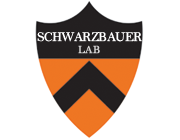Surface derivatization strategy for combinatorial analysis of cell response to mixtures of protein domains
Type
We report a robust strategy for conjugating mixtures of two or more protein domains to nonfouling polyurethane surfaces. In our strategy, the carbamate groups of polyurethane are reacted with zirconium alkoxide from the vapor phase to give a surface-bound oxide that serves as a chemical layer that can be used to bond organics to the polymer substrate. A hydroxyalkylphosphonate monolayer was synthesized on this layer, which was then used to covalently bind primary amine groups in protein domains using chloroformate-derived cross-linking. The effectiveness of this synthesis strategy was gauged by using an ELISA to measure competitive, covalent bonding of cell-binding (III(9-10)) and fibronectin-binding (III(1-2)) domains of the cell adhesion protein fibronectin. Cell adhesion, spreading, and fibronectin matrix assembly were examined on surfaces conjugated with single domains, a 1:1 surface mixture of III(1-2) and III(9-10), and a recombinant protein "duplex" containing both domains in one fusion protein. The mixture performed as well as or better than the other surfaces in these assays. Our surface activation strategy is amenable to a wide range of polymer substrates and free amino group-containing protein fragments. As such, this technique may be used to create biologically specific materials through the immobilization of specific protein groups or mixtures thereof on a substrate surface.

